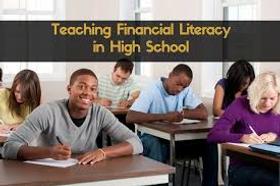Slate Mountain School serves 55 students in grades Kindergarten-12.
The student:teacher ratio of 5:1 is lower than the Utah state level of 21:1.
Minority enrollment is 41% of the student body (majority Hispanic), which is higher than the Utah state average of 29% (majority Hispanic).
Quick Stats (2025)
- School Type: Alternative school
- Grades: Kindergarten-12
- Enrollment: 55 students
- Student:Teacher Ratio: 5:1
- Minority Enrollment: 41%
- Source: National Center for Education Statistics (NCES), UT Dept. of Education
School Overview
School Type
Grades Offered
Grades Kindergarten-12
Total Students
55 students
Gender %
Total Classroom Teachers
12 teachers
School Rankings
The diversity score of Slate Mountain School is 0.56, which is more than the diversity score at state average of 0.46. The school's diversity has stayed relatively flat over five school years.
Student : Teacher Ratio
5:1
21:1
American Indian
2%
1%
Asian
2%
2%
Hispanic
31%
20%
Black
2%
1%
White
59%
71%
Hawaiian
n/a
1%
Two or more races
4%
4%
All Ethnic Groups
School Statewide Testing
School District Name
Source: National Center for Education Statistics (NCES), UT Dept. of Education
Profile last updated: 02/09/2025
Frequently Asked Questions
How many students attend Slate Mountain School?
55 students attend Slate Mountain School.
What is the racial composition of the student body?
59% of Slate Mountain School students are White, 31% of students are Hispanic, 4% of students are Two or more races, 2% of students are American Indian, 2% of students are Asian, and 2% of students are Black.
What is the student:teacher ratio of Slate Mountain School?
Slate Mountain School has a student ration of 5:1, which is lower than the Utah state average of 21:1.
What grades does Slate Mountain School offer ?
Slate Mountain School offers enrollment in grades Kindergarten-12
What school district is Slate Mountain School part of?
Slate Mountain School is part of Provo School District.
School Reviews
Review Slate Mountain School. Reviews should be a few sentences in length. Please include any comments on:
- Quality of academic programs, teachers, and facilities
- Availability of music, art, sports and other extracurricular activities
Recent Articles

Taxes, Investments and Loans: Learning Financial Literacy in High School
While reading, writing, and arithmetic are the foundation of a child's education, financial literacy is growing in importance as well. Learn about public schools that are teaching financial literacy to their students.

Is Your ľĹÓÎĚĺÓý Understaffed? Why Schools are Instituting Hiring Freezes
Explore the trend of hiring freezes in public schools and their impact on education. Learn why schools are implementing these measures and what it means for students and staff.

43 Fantastic ESL Resources for Students
We've put together this ESL resource guide to help students, from teens to adults, get the help they need to achieve their goals with learning English





